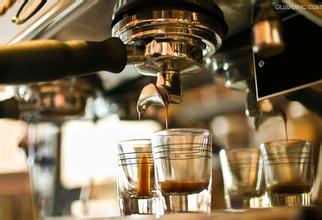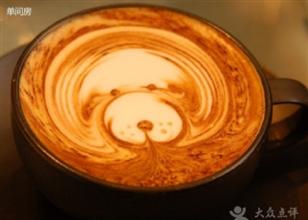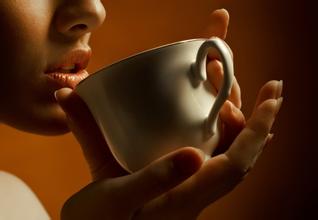Common Coffee utensils: the Evolution of Commercial Coffee machines

Gestation period: before 1900
Perfect Steam Theory of Coffee extraction
In 1818, Dr. Romershausen obtained a patent for the extractor in Prussia.
In 1822, the Frenchman Louis Bernard Rabout obtained a patent to obtain a cleaner extract based on the characteristics of oil-absorbing ink paper combined with the design of Dr. Romershausen.
In 1824, Caseneuve, a Parisian craftsman, designed a coffee utensil that was too complex to make, hoping to avoid the loss of aroma.
In 1827, Laurens's patent in France emphasized the need to wet coffee powder with steam before coffee extraction.
"in 1833, Samuel Parker, an Englishman, invented using a pump to pump water up through coffee, rather than letting it flow down. (he paid particular attention to the fact that the good taste of coffee was first bitter and was extracted at the later stage.)
In 1838, Leburn, an optician in Paris, designed a number of small table coffee makers, which were very popular in southern Europe.
In 1840, Tiesset designed a vacuum pump to pull hot water down with extra force through coffee powder.
In 1844, the Frenchman Cordier painted a number of coffee extractors in his patent, one of which was very similar to Eicke's German machine 30 years later.
In 1847, Romershausen made a steam pressure coffee pot.
In 1855, the Frenchman Loysel introduced a large-capacity bar coffee machine (about 4.5m high), which claims to make 10000 cups of coffee a day.
In 1868, the Viennese Reiss developed a new type of Viennese pot.
In 1885, the Italian Angelo Moriondo signed a patent for coffee that could make 50 cups at a time.
Childhood: 1901-1947
Exclusive privilege of one cup of coffee at a time
The coffee machine designed by Luigu Bezzera in 1901 was successfully patented.
In 1902, his friend Desiderio Pavoni added a pressure relief piston device to the machine and commercialized the machine for production and sale.
In 1903, Bezzern sold the patent to Pavoni at a cost of 10, 000 lire due to financial difficulties.
In 1905, La Pavoni Company was announced.
In 1906, the Italian Arduino applied for a patent to install a heat exchanger in the machine to heat the water quickly.
In 1909, Luigi Giarlotto added a pump to the machine to solve the problem of insufficient pressure in the extraction.
In 1910, his second patent was the screw-down piston, which squeezed out all the delicacies of coffee from the piston.
In 1935, Dr. Illy invented the first machine to use compressed air to push water through coffee powder.
Since 1938, the placement of the boiler has been successfully improved from the original vertical to horizontal.
Puberty: 1948-1961
The pressure increases and the water temperature decreases; the birth of the "gold bubble"
In 1948, Gaggia introduced the piston lever spring coffee machine to the market.
In 1952, the large vertical machine disappeared overnight.
In 1956, Cimbali used hydraulic systems to avoid consuming too much effort when using levers.
Maturity: after 1962
The popularization of electronic parts; the advantages of "heat exchange and heat cycle"
In 1955, Giampietro Saccani took an important step to keep the temperature of the cooking head stable.
In 1961, Italy and Spain jointly produced the E61 model. In the past, hot water was pressurized, but now it is pressurized and then heated, which is a perfect revolution compared to the past.
Release time: 2007-9-26 8:56:24 number of visits: 73
Gestation period: before 1900
Perfect Steam Theory of Coffee extraction
In 1818, Dr. Romershausen obtained a patent for the extractor in Prussia.
In 1822, the Frenchman Louis Bernard Rabout obtained a patent to obtain a cleaner extract based on the characteristics of oil-absorbing ink paper combined with the design of Dr. Romershausen.
In 1824, Caseneuve, a Parisian craftsman, designed a coffee utensil that was too complex to make, hoping to avoid the loss of aroma.
In 1827, Laurens's patent in France emphasized the need to wet coffee powder with steam before coffee extraction.
"in 1833, Samuel Parker, an Englishman, invented using a pump to pump water up through coffee, rather than letting it flow down. (he paid particular attention to the fact that the good taste of coffee was first bitter and was extracted at the later stage.)
In 1838, Leburn, an optician in Paris, designed a number of small table coffee makers, which were very popular in southern Europe.
In 1840, Tiesset designed a vacuum pump to pull hot water down with extra force through coffee powder.
In 1844, the Frenchman Cordier painted a number of coffee extractors in his patent, one of which was very similar to Eicke's German machine 30 years later.
In 1847, Romershausen made a steam pressure coffee pot.
In 1855, the Frenchman Loysel introduced a large-capacity bar coffee machine (about 4.5m high), which claims to make 10000 cups of coffee a day.
In 1868, the Viennese Reiss developed a new type of Viennese pot.
In 1885, the Italian Angelo Moriondo signed a patent for coffee that could make 50 cups at a time.
Childhood: 1901-1947
Exclusive privilege of one cup of coffee at a time
The coffee machine designed by Luigu Bezzera in 1901 was successfully patented.
In 1902, his friend Desiderio Pavoni added a pressure relief piston device to the machine and commercialized the machine for production and sale.
In 1903, Bezzern sold the patent to Pavoni at a cost of 10, 000 lire due to financial difficulties.
In 1905, La Pavoni Company was announced.
In 1906, the Italian Arduino applied for a patent to install a heat exchanger in the machine to heat the water quickly.
In 1909, Luigi Giarlotto added a pump to the machine to solve the problem of insufficient pressure in the extraction.
In 1910, his second patent was the screw-down piston, which squeezed out all the delicacies of coffee from the piston.
In 1935, Dr. Illy invented the first machine to use compressed air to push water through coffee powder.
Since 1938, the placement of the boiler has been successfully improved from the original vertical to horizontal.
Puberty: 1948-1961
The pressure increases and the water temperature decreases; the birth of the "gold bubble"
In 1948, Gaggia introduced the piston lever spring coffee machine to the market.
In 1952, the large vertical machine disappeared overnight.
In 1956, Cimbali used hydraulic systems to avoid consuming too much effort when using levers.
Maturity: after 1962
The popularization of electronic parts; the advantages of "heat exchange and heat cycle"
In 1955, Giampietro Saccani took an important step to keep the temperature of the cooking head stable.
In 1961, Italy and Spain jointly produced the E61 model. In the past, hot water was pressurized, but now it is pressurized and then heated, which is a perfect revolution compared to the past.
Source:
The blog of the world of coffee with two bottles of water
Important Notice :
前街咖啡 FrontStreet Coffee has moved to new addredd:
FrontStreet Coffee Address: 315,Donghua East Road,GuangZhou
Tel:020 38364473
- Prev

Special and rare Coffee processing methods in the World: a brief introduction to Stone roasted Coffee
Talking about its baking mechanism, the stone roasting coffee roaster is about the same as the ordinary hot air roaster in appearance, but the internal structure is different. First of all, there is a net between the charcoal fire and the stone pot in its closed hot blast stove, which is separated by a layer of unique ore in Gifu Prefecture, Japan, and secondly, its stone pot is different from ordinary boilers, which is made of two-layer punched iron mesh, in the middle of the iron net.
- Next

How to drink Espresso is the right step? What's the caffeine content in espresso?
Espresso is the most fragrant coffee in the world. You need to drink a cup of water and embellish your mouth before tasting it. The basic tasting method is to smell first. Espresso has a strong and charming aroma and should be well immersed. Then there is the product, Espresso has a variety of genres, of course, according to personal preferences to decide. Basically, there are two kinds, one is to drink in one sip, and the other is to drink a little bit first.
Related
- What is the meaning of lactic acid fermentation with coffee bean treatment?
- How to judge the state of foam by sound?
- How does the latte pull out the unicorn pattern? Come to get for a little trick to improve the flower pull!
- Will flower pulling affect the taste of the latte?
- Do you know the history of coffee?
- The difference between honey treatment and sun washing what is raisin honey treatment?
- What kind of milk can a novice use to make coffee foam to keep the foam longer? The correct method and skills of milking tutorial sharing
- Why do washed coffee beans taste sour? Flavor characteristics of washed Coffee
- Introduction to the skill of how to practice the size and height of water injection around the circle of hand-brewed coffee
- How do beginners practice coffee flower drawing from scratch?

